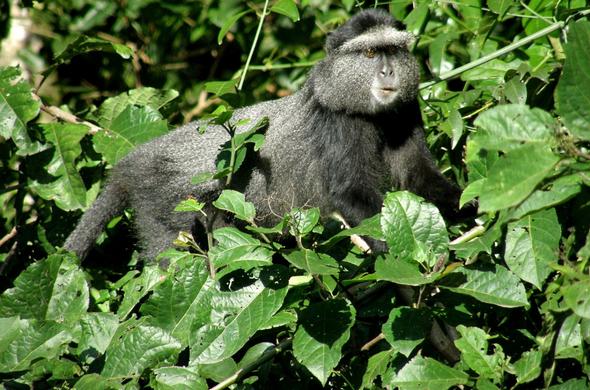Kakamega Forest, Kenya
🌿 Kakamega Forest: Kenya’s Last Tropical Rainforest 🌿
Nestled in the western part of Kenya, Kakamega Forest is the country’s last tropical rainforest, offering an unparalleled opportunity to experience lush greenery, rare species, and the sounds of nature. The forest is a haven for birdwatchers, nature enthusiasts, and adventurers, providing a peaceful retreat with a mix of history, biodiversity, and conservation efforts.
Kakamega Forest covers over 200 square kilometers and is a crucial biodiversity hotspot. It is home to various species of plants, animals, and birds, many of which are rare or endemic to the region.
🚗 Getting to Kakamega Forest: Accessing Nature’s Sanctuary 🚗
Kakamega Forest is located about 50 kilometers north of Kakamega town, in western Kenya. There are several ways to reach the forest:
-
By Road: From Nairobi, you can travel to Kakamega by bus or car. The drive takes approximately 5-6 hours via the Kakamega Road. Once in Kakamega town, it’s a short drive (about 30 minutes) to the forest reserve entrance.
-
By Air: The nearest airport is Kakamega Airstrip, which is a 20-minute drive from the forest. There are charter flights from Nairobi to Kakamega, though these are less frequent.
🌞 Best Time to Visit Kakamega Forest: Enjoy the Serenity and Biodiversity 🌞
Kakamega Forest enjoys a moderate climate, with rainfall occurring throughout the year. However, the best time to visit depends on your preferred experience:
-
Dry Season (June to October): The dry months are ideal for hiking and exploring the forest trails, as the weather is cooler and the paths are less muddy. It’s also easier to spot wildlife during this period.
-
Wet Season (November to May): The forest is at its lushest during the rainy season, with vibrant plant life and an abundance of birdlife. However, the trails can become slippery and challenging for hikes.
🦜 Things to Do in Kakamega Forest: Nature’s Playground Awaits 🦜
Kakamega Forest offers a wide range of activities for nature lovers, from hiking and birdwatching to cultural experiences. Here are some of the top things to do:
-
Birdwatching: Kakamega Forest is a birdwatcher’s paradise, with over 330 bird species, including rare and endangered ones like the Blue-headed Coucal and Great Blue Turaco. The forest’s diverse ecosystems create an ideal habitat for both migratory and resident bird species.
-
Nature Walks and Hiking: The forest has several marked trails that take you through the dense canopy of trees, across streams, and to scenic viewpoints. The Kakamega Forest Reserve Trails vary in difficulty, ranging from easy walks to more strenuous hikes. A popular trail is the Isiukhu Waterfall Trail, which leads to a stunning waterfall.
-
Visit the Kakamega Forest Visitor Center: Start your adventure by visiting the Visitor Center, where you can learn about the forest’s history, biodiversity, and conservation efforts. The center offers informational displays, maps, and guided tours of the forest.
-
Forest Canopy Tour: For a unique perspective of the forest, try the canopy walk, where you can walk above the treetops along suspended bridges. It’s an exciting way to experience the forest's biodiversity from a height.
-
Wildlife Spotting: In addition to birds, Kakamega Forest is home to several species of monkeys, baboons, and forest elephants. The forest is also a refuge for rare butterfly species. Keep your eyes peeled for elusive creatures and enjoy the peacefulness of the forest.
-
Cultural Experience: Kakamega is also rich in local Luhya culture. Visitors can explore nearby villages to learn about the Luhya community’s traditions, music, and dances. The Kakamega Cultural Centre offers cultural performances and the chance to interact with local artisans.
🏨 Where to Stay in Kakamega Forest: Accommodation Options in Nature 🏨
Kakamega Forest has a few options for visitors who want to stay close to nature. From eco-friendly lodges to campsites, here are some great places to stay:
-
Kakamega Forest Eco-Lodge
Located near the entrance of the forest, this eco-lodge offers comfortable accommodation in the heart of nature. It provides rooms with scenic views of the forest and offers activities like guided forest walks and birdwatching tours. -
Rondo Retreat Centre
This peaceful retreat is nestled within the forest and offers comfortable rooms, excellent meals, and nature-based activities. It’s an ideal place for those seeking a tranquil escape and a closer connection to nature. -
Kakamega Hill Guest House
Situated about 15 minutes from the forest, Kakamega Hill Guest House offers budget-friendly accommodation with lovely views of the surrounding countryside. It’s an ideal option for those looking for a convenient and affordable base. -
Camping
For a more rustic experience, there are campsites within the forest reserve. Camping gives you the chance to immerse yourself fully in the natural environment and enjoy the sounds of the forest at night.
🌍 Conservation Efforts at Kakamega Forest: Protecting Biodiversity for the Future 🌍
Kakamega Forest is one of Kenya’s most important conservation areas, as it is the last remaining tropical rainforest in the country. Efforts to protect the forest have been ongoing, with initiatives aimed at preserving its unique biodiversity. This includes working with local communities to reduce illegal logging, promote sustainable agriculture, and protect endangered species. Visitors are encouraged to respect the natural environment and support conservation efforts by following guidelines and supporting local conservation projects.
Rating Overview
-
Wildlife Viewing: ★★★★★
-
Adventure Activities: ★★★★☆
-
Cultural Experience: ★★★★☆
-
Accommodation Options: ★★★★☆
-
Accessibility: ★★★☆☆
-
Eco-friendly Practices: ★★★★☆
🌟 Why Visit Kakamega Forest? A Nature Lover’s Paradise 🌟
Kakamega Forest is a rare and vibrant treasure in Kenya, offering a unique opportunity to experience one of the country’s most important ecosystems. Whether you’re a birdwatcher, an adventurer, or someone looking to connect with nature, Kakamega Forest has something special to offer. Its lush environment, diverse wildlife, and rich cultural heritage make it an unforgettable destination for any traveler.


